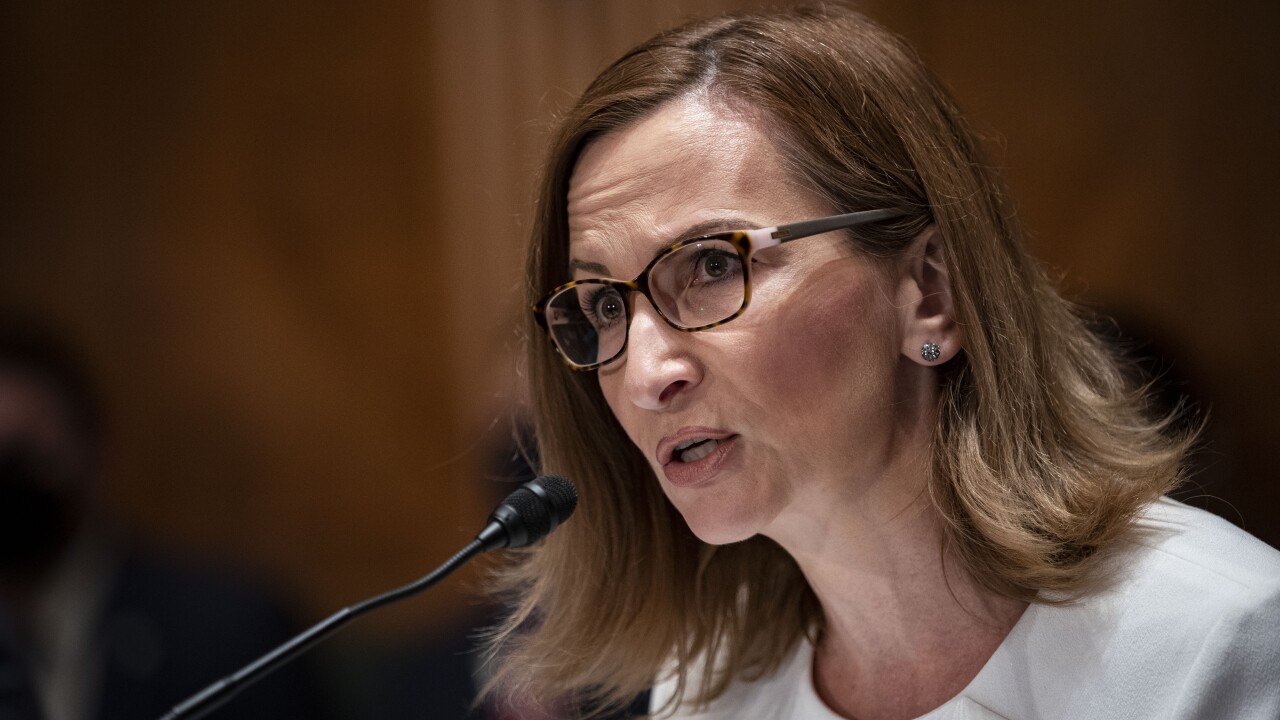-
A combination of low yields and loosening terms may be setting banks up for trouble in the event of an economic downturn, one of the nation's top credit ratings agencies said Monday.
May 13
Moody's is feeling more bullish on U.S. banks.
The credit rating agency on Tuesday changed its outlook on the U.S. banking system to stable from negative, citing an improving economy and strengthening balance sheets at many institutions. Its rating on banks had been negative since 2008.
Though banks have said that continued low interest rates are compressing margins, Moody's said in its report that, overall, low rates are stimulating the economy and boosting real estate values. Meanwhile, banks have had the benefit of another year to shed troubled loans and build capital following the financial crisis, Moody's said.
"As a result, banks' asset quality metrics continue to improve, with net chargeoffs now approaching pre-crisis levels," Moody's wrote.
The banking system outlook conveys Moody's view of how the operating environment for banks may affect their asset quality, capital, funding, liquidity and profitability, and represents the ratings agency's view of conditions that factor into the credit ratings Moody's assigns to each financial institution. In all, Moody's rates 60 bank holding companies in the U.S. that together held roughly 75% of U.S. banking assets, as of Dec. 31.
Though economic growth remains modest and unemployment remains high in historic terms, the U.S. economic outlook compares favorably to that of other leading industrial nations, according to Moody's, which projects gross domestic product to grow 2.1% with an unemployment rate of 7.7% over the coming 12 to 18 months. Despite the compression in margins, U.S. banks' core profitability remains superior to that of most global peers," Moody's wrote.
Still, low interest rates can drag down banks' earnings and encourage looser lending standards, which Moody's calls "the most likely reason the U.S. banking system outlook could return to negative." Regulators also have allowed banks to return more earnings to shareholders, thereby slowing improvement in banks' capital ratios, according to Moody's.
Banks themselves continue to take on risk by expanding into new markets or ramping up in specific business lines, Moody's noted. FirstMerit's (FMER) expansion into Chicago and other cities, and Union Bank of California's acquisition of a national commercial real estate portfolio are examples of companies incurring risks to address business challenges, according to the ratings agency.
Though Moody's has upped its outlook on banking system, the agency maintains a negative outlook on the holding companies of the nation's biggest banks, which are presumed by the Dodd-Frank Act to be systemically important.
A proposal last year by the Federal Deposit Insurance Corp. to place JPMorgan Chase (JPM), Bank of America (BAC), Citigroup (NYSE:C), Bank of New York Mellon (BK), Goldman Sachs (GS), Morgan Stanley (MS), and Wells Fargo (WFC) into receivership in the event that it would have to wind down their banking units means the parent companies would benefit from less support than their subsidiaries, according to Moody's.
Moody's said the FDIC is likely to face several hurdles in implementing the proposal, including: obtaining agreement from regulators in other countries to refrain from seizing systemically important subsidiaries; ensuring sufficient capital at holding companies to recapitalize their operating subsidiaries; simplifying the corporate structure of complicated banking groups; and changing the market structure so that interconnections among big banks diminish.
"Of these four hurdles, we believe international cooperation is the highest, since it is outside of U.S. regulatory authority," Moody's added.





